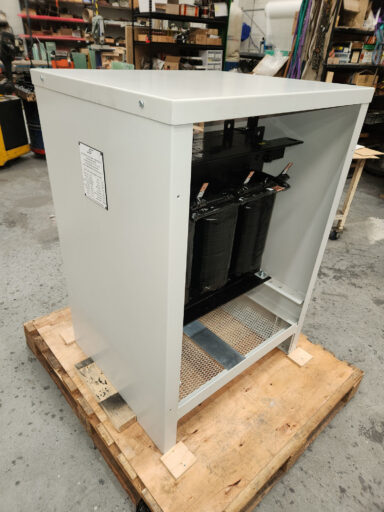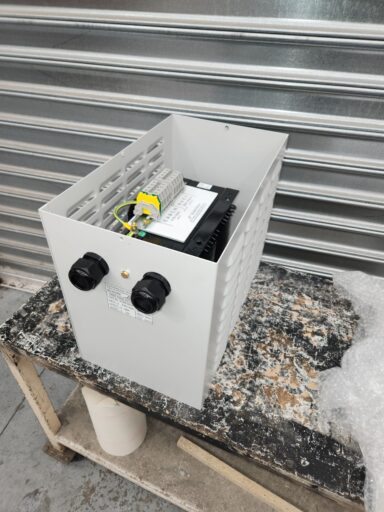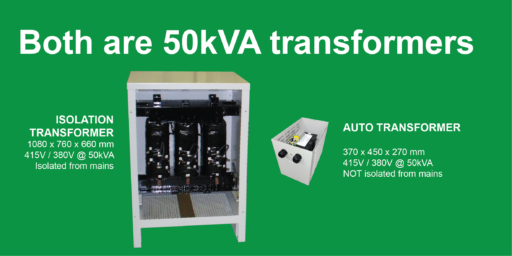5 Tips to Determine Whether You Need an Isolation Transformer or an Autotransformer
Choosing the right transformer for your electrical system is crucial for efficiency, safety, and compliance. Many electricians and engineers often ask: When should I use an isolation transformer, and when is an autotransformer the right choice? To help you make an informed decision, here are five key factors to consider.
1. Rule of Thumb
If the equipment needing voltage conversion could be wired directly into the supply in its country of origin, then an autotransformer is typically suitable. If isolation was required in the original setup, you’ll likely need an isolation transformer in the new installation as well.
2. Determine the Need for Electrical Isolation
Isolation transformers provide complete electrical separation between the primary and secondary windings, which helps prevent ground loops, electrical noise, and shock hazards. If your application requires safety isolation—such as in medical, sensitive industrial, or control system environments—an isolation transformer is essential.
Autotransformers, on the other hand, do not provide isolation because the primary and secondary share a common winding. If electrical isolation is not a requirement, an autotransformer can be a more cost-effective and compact solution.
3. Consider the Voltage Conversion Ratio
If the voltage step-up or step-down requirement is small, an autotransformer is typically the better choice due to its smaller size, lower cost, and higher efficiency. For example, converting 480V to 415V in industrial applications is a common use case for autotransformers.
However, when dealing with large voltage differences, such as stepping down 480V to 120V, an isolation transformer is often the preferred option to ensure voltage stability and safety compliance.
4. Assess Space and Cost Constraints
Autotransformers are generally more compact and lightweight compared to isolation transformers of the same power rating. Since they share a common winding, they use fewer materials, making them more cost-effective. If space is limited or budget is a concern, an autotransformer is an efficient choice.
Isolation transformers, while larger and more expensive, provide added protection against transients, surges, and electrical noise, which may justify their higher cost in critical applications.
5. Identify Safety and Compliance Requirements
Certain industrial applications, especially those involving hazardous locations, sensitive equipment, or international safety standards, may require isolation transformers to meet regulatory requirements. Industries such as healthcare, power distribution, and critical control systems often mandate isolation to enhance operator safety and equipment longevity.
Autotransformers, while efficient, do not meet certain safety isolation standards and should only be used when compliance regulations allow their application.
Final Thoughts: Choosing the Right Transformer for Your Needs
The choice between an isolation transformer and an autotransformer depends on your specific application, safety considerations, space limitations, and regulatory requirements. Use this guide to determine which transformer type is right for your project:
✅ Need electrical isolation? → Choose an isolation transformer.
✅ Small voltage conversion (e.g., 480V to 415V)? → Use an autotransformer.
✅ Limited space and budget? → An autotransformer is more cost-effective.
✅ Working with sensitive electronics? → Isolation transformers reduce electrical noise.
✅ Have strict safety or compliance standards? → Isolation transformers provide necessary protection.


At Southern Electronic Services (SES), we specialize in high-performance transformer solutions tailored to industrial and commercial applications. Whether you need an isolation transformer or an autotransformer, we can help you find the perfect solution for your power needs.
Contact us today to learn more about our transformer offerings and how we can support your next project!
3ph isolation transformer, isolation transformer, step down transformer, auto transformer, power transformer
Next Post
Electrical Contractors - Biggest hurdles
March 17, 2025Other News

5 steps to choosing the right transformer
5 steps – choosing the right transformer Choosing the right transformer is crucial to ensuring efficiency, reliability, and long-term performance in any electrical system. The right choice will minimize downtime, reduce costs, and ensure compliance with industry standards. Here’s how to make the right decision in five simple steps. Download our free handbook here In…

Electrical Contractors – Biggest hurdles
The 5 Biggest Challenges Electrical Contractors Face – And How SES Helps Solve Them – How good would it be to complete a job on time, under budget, the security of local support and service, backed by huge warranty periods? You’d be a hero, right? How much money is your company losing by not delivering…

